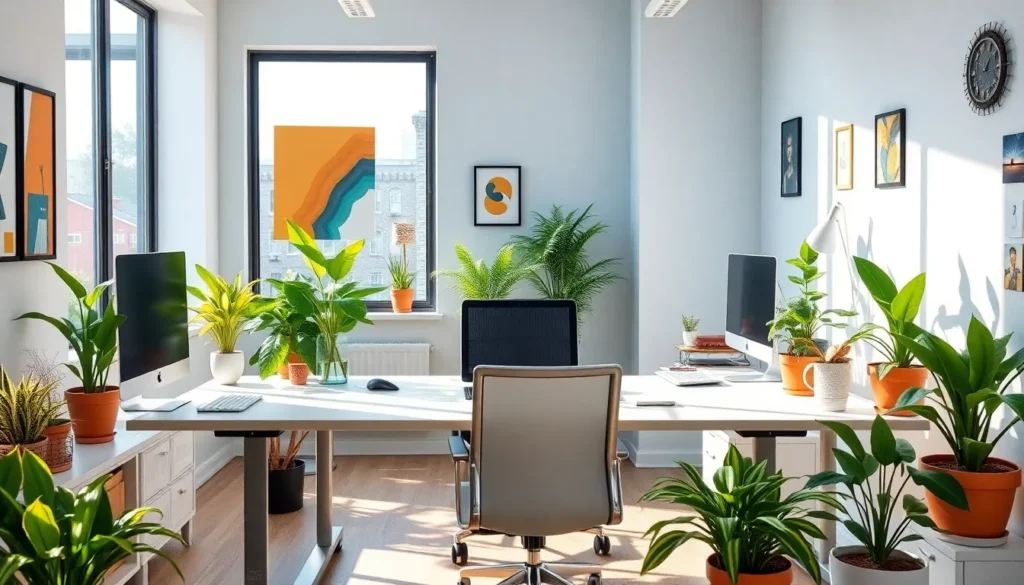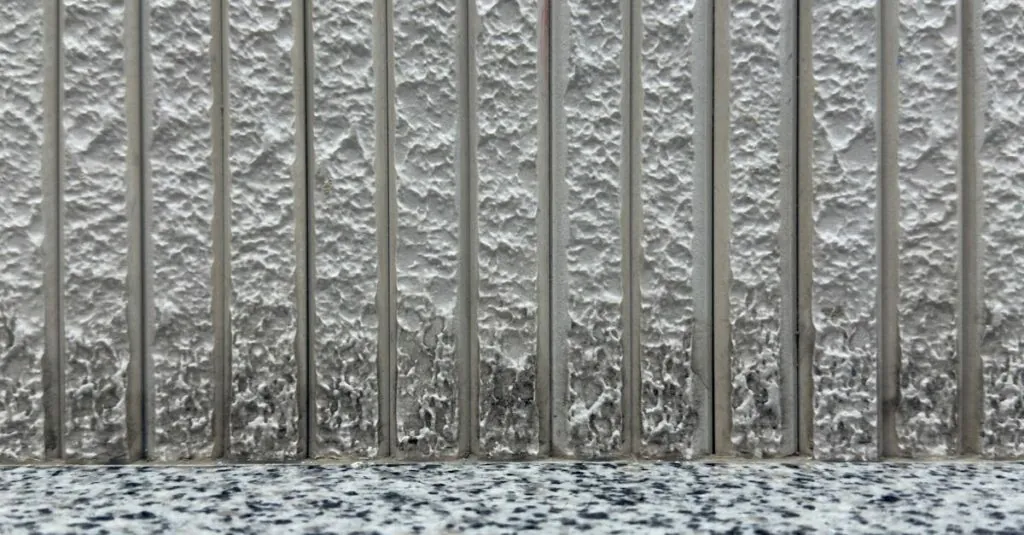Table of Contents
TogglePatterns in interior design aren’t just for grandmas and quirky aunts anymore. They’re the secret sauce that can transform a dull room into a vibrant masterpiece. Whether it’s bold stripes that shout confidence or delicate florals that whisper tranquility, the right pattern can make walls sing and floors dance.
Imagine stepping into a space where every corner tells a story, where geometric shapes play peek-a-boo with your senses. Patterns can create depth and interest, turning a simple living room into a stylish sanctuary. So, if you think patterns are just for wallpaper or a throw pillow, think again. They’re the unsung heroes of interior design, ready to elevate any space from “meh” to “wow!” Get ready to dive into the world of patterns and discover how they can add that extra flair your home has been craving.
Overview of Pattern in Interior Design
Patterns play a pivotal role in interior design, defining spaces and influencing moods. They encompass various visuals, enhancing an area’s overall aesthetic.
Definition of Patterns
Patterns refer to recurring designs or motifs used in decor. These may include geometric shapes, botanical prints, or abstract styles. Each serves to create visual interest and can appear on surfaces like wallpapers, fabrics, and furnishings.
Importance of Patterns in Design
Patterns contribute significantly to the character of a space. They can define style, evoke emotions, and influence how one perceives a room. Subtle patterns can create harmony, while bold designs can serve as focal points. Effective use of patterns encourages creativity and personal expression, making a space uniquely reflective of its inhabitant.
Types of Patterns
Patterns in interior design come in various styles, each offering unique visual appeal and functionality. They enhance spaces while contributing to overall aesthetics. Here’s a closer look at three popular types of patterns.
Geometric Patterns
Geometric patterns feature shapes like rectangles, triangles, and circles. They create a contemporary and structured look. Whether used in wallpaper, rugs, or furniture, these patterns often establish a modern vibe. Bold geometric designs capture attention, serving as strong focal points in a room. Linear patterns work well in minimalist spaces, while intricate shapes add complexity. For instance, hexagonal tiles can add depth to a kitchen or bathroom, enhancing visual interest through repetition.
Floral Patterns
Floral patterns bring the essence of nature indoors. These designs range from large-scale blooms to delicate, subtle motifs. They evoke feelings of warmth and liveliness. Bright, bold flowers can transform a living room or bedroom, providing a cheerful ambiance. Smaller, intricate floral patterns offer an air of sophistication, working well in spaces desiring softer aesthetics. Using floral patterns in curtains or upholstery allows for creative expression, inviting a touch of outdoor elegance into interior settings.
Abstract Patterns
Abstract patterns break the rules of traditional design. They often incorporate splashes of color, fluid designs, and unexpected shapes. This variety allows for immense creative freedom, as spaces come alive with unique interpretations. Abstract artwork on walls or statement pieces can spark conversations and intrigue. Additionally, these patterns can be versatile, adaptable to multiple styles—be it modern, eclectic, or even industrial. Utilizing abstract patterns fosters personal expression, making spaces truly one-of-a-kind.
Techniques for Incorporating Patterns
Incorporating patterns into interior design can transform a space significantly. Various techniques exist to enhance aesthetics and functionality.
Mixing Patterns Effectively
Mixing patterns involves balancing different designs to create harmony. Start by selecting a primary pattern that anchors the space; for instance, choosing a bold geometric print can establish a focal point. Next, incorporate secondary patterns, ensuring they share a common color palette. Floral patterns, paired with stripes, can inject vibrancy without clashing. Utilizing different scales within patterns also enhances the mix; for example, pairing large florals with smaller geometric designs can create visual interest. Lastly, applying patterns to varying surfaces, such as textiles and walls, brings depth and continuity throughout the space.
Scale and Proportion in Patterns
Scale and proportion play a crucial role in pattern application. Large-scale patterns dominate a room, making them ideal for accent walls or statement furniture pieces. Smaller patterns, on the other hand, add subtlety and can elegantly complement larger designs. It’s essential to consider the proportions of furniture and space when selecting patterns; oversized patterns can overwhelm a compact room. To maintain balance, ensure that the scale of patterns works harmoniously with the area. Varying the size of patterns throughout the room can also create a cohesive look, enhancing overall design without overpowering the space.
Popular Trends in Pattern Usage
Patterns play a significant role in modern interior design. They enhance visual interest and overall aesthetics in diverse spaces.
Sustainable Patterns
Sustainable patterns increasingly feature in contemporary decor. Designers incorporate eco-friendly materials like organic cotton and bamboo to create textiles with striking designs. These patterns not only contribute to a sustainable lifestyle but also connect nature and style. Bold patterns using natural dyes reflect a commitment to the environment. Homes benefit from this trend by showcasing unique artwork while promoting sustainability.
Cultural Influences on Patterns
Cultural influences shape pattern design across the globe. Each culture brings distinctive motifs and color palettes, enriching the interior design landscape. For instance, traditional African prints display vibrant colors and geometric shapes, while Japanese textiles often feature serene floral and wave patterns. Incorporating these cultural elements allows individuals to celebrate their heritage. Unique blends of patterns can tell stories that resonate with personal experiences, creating a rich tapestry within the home. Understanding these cultural connections enhances the appreciation of diverse aesthetics in interior settings.
Patterns are essential tools in interior design that can dramatically enhance any space. They offer a way to express individuality and creativity while transforming ordinary environments into extraordinary ones. By understanding the various types of patterns and their unique contributions, homeowners can make informed choices that reflect their personal style.
Incorporating patterns thoughtfully can create visual interest and harmony, allowing for a balanced aesthetic. Whether it’s through bold geometric designs or delicate florals, each pattern tells a story and adds depth to a room. Embracing these design elements not only elevates the overall look but also fosters a sense of comfort and belonging in one’s home.







